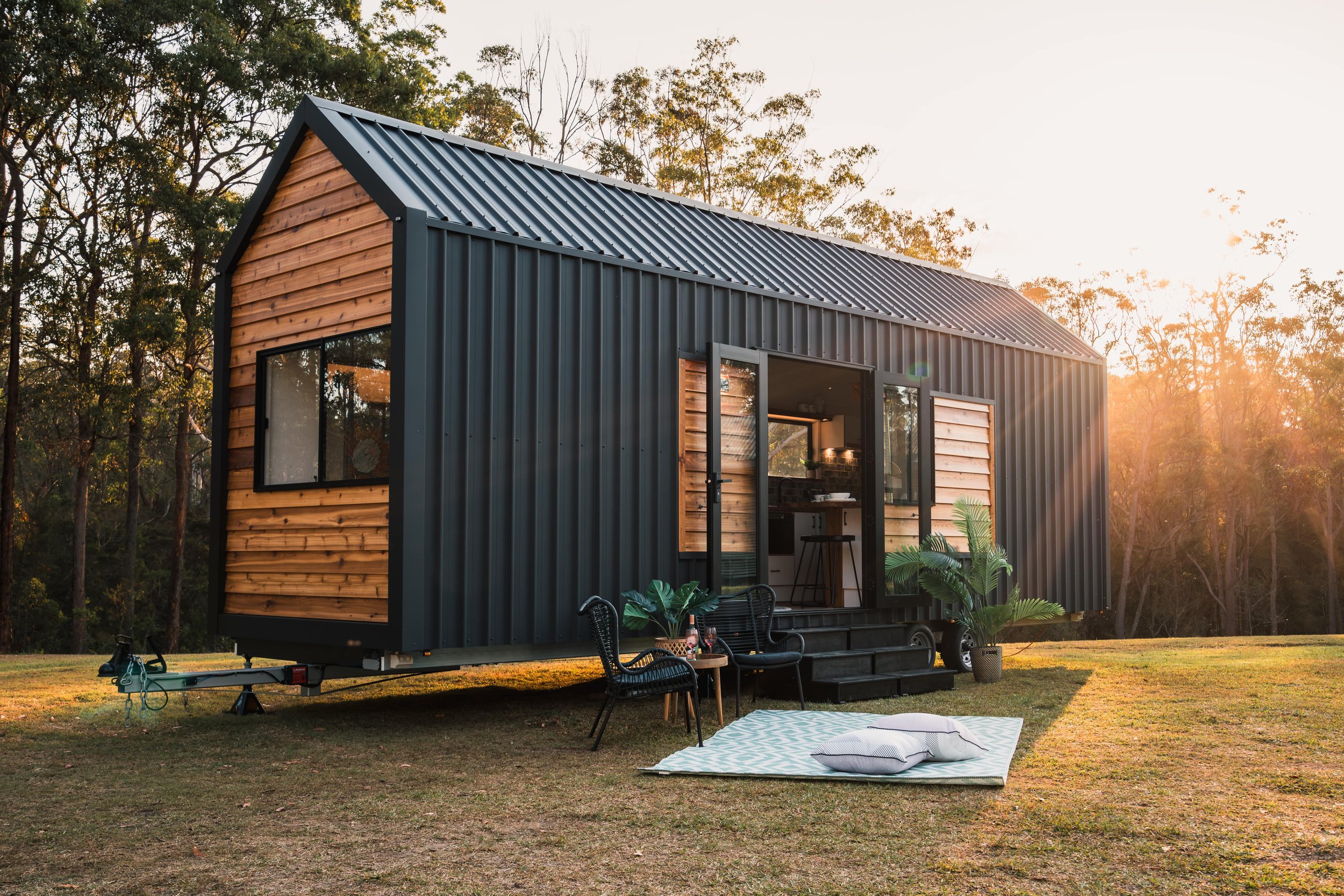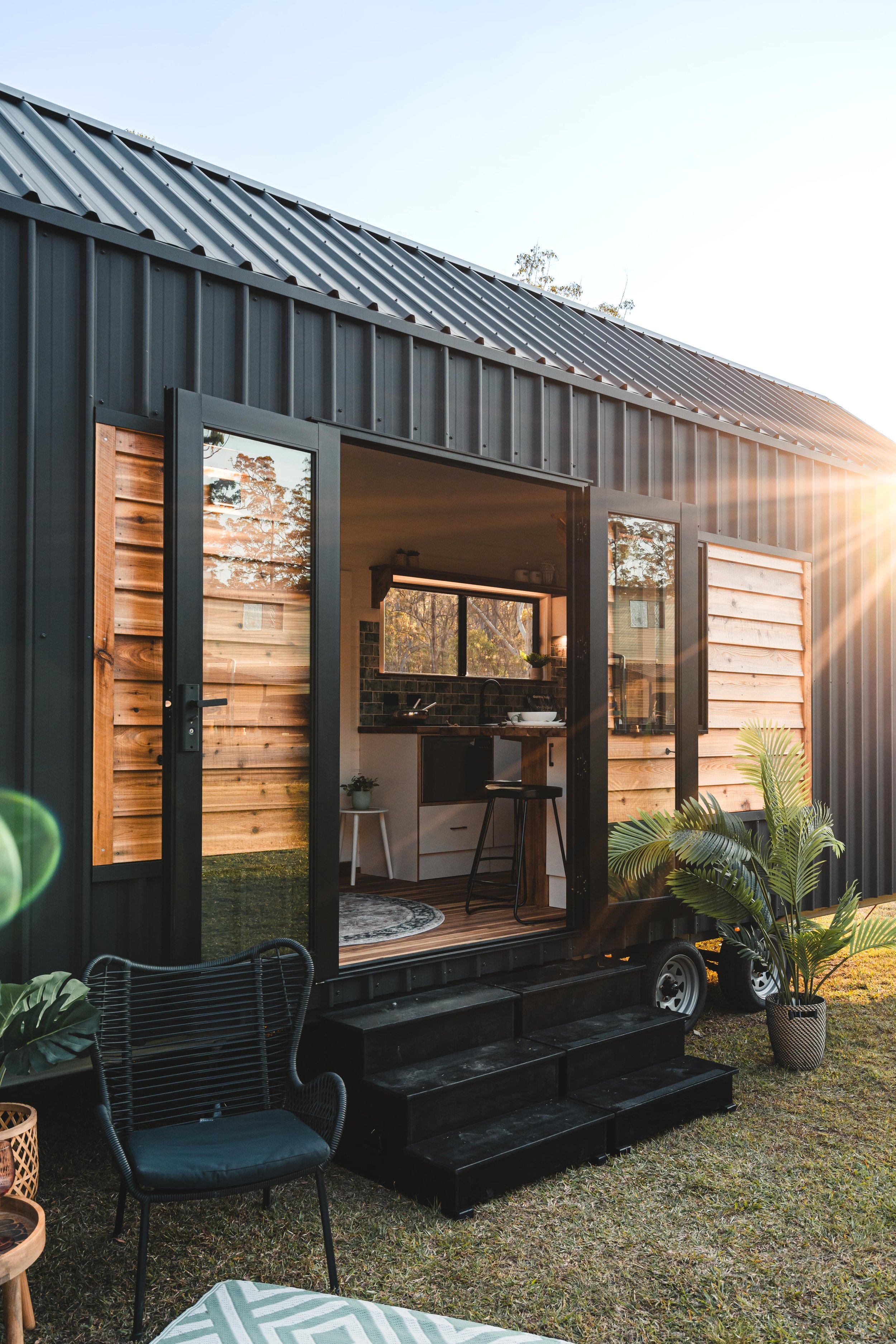tiny houses for RETIREES
As retirement approaches, many Australians are seeking ways to downsize and embrace a more simplified lifestyle. Tiny homes for retirement are becoming more and more popular among retirees because they provide a unique solution that prioritises freedom and flexibility, financial savings, and a low-maintenance but still independent lifestyle.
This guide explores tiny houses on wheels for retirees and the essential considerations for those planning a tiny living retirement.
Why Tiny Houses for Retirees
Tiny houses for retirees are made to meet the changing needs of this life stage, offering a smaller, accessible and simplified living space whilst still providing comfort, style and independence. It encourages low-maintenance living, financial independence and the flexibility to move it as needs change. Multi-generational living is a growing trend, bringing families closer together, whilst keeping healthy space by enjoying separate dwellings. In times of unprecedented housing and living costs, a tiny house in close proximity to family, which can be relocated if needs change, is a game changer.
The affordability and efficiency of tiny houses allow retirees to direct their resources toward what matters most—whether it’s travel, family time, or personal hobbies. Embracing a tiny house in retirement promotes a stress-free, fulfilling lifestyle focused on experiences rather than expenses.
Benefits of Tiny Houses for retirees
FINANCIAL FREEDOM – Tiny houses are a cost-effective choice for retirees, with low initial costs offering the freedom to spend resources where they matter most.
LOCATION FLEXIBILITY - Tiny houses on wheels offer retirees the freedom to choose their retirement location, with the flexibility to explore new destinations or relocate closer to family and friends.
SIMPLIFIED LIVING - Downsizing to a tiny house naturally promotes a clutter-free, simpler lifestyle, helping retirees focus on what truly matters.
MINIMAL MAINTENANCE - Tiny houses are known for their simplicity and ease of maintenance, allowing retirees to enjoy their time instead of being burdened by household chores.
ADAPTABILITY – Tiny homes provide a versatile solution that can align with different retirement goals—whether traveling, spending more time with family, or participating in community activities.
GET INSPIRED BY OUR CUSTOMERS
Sojourner
Uralla, NSW
Independent Retirement Patch
“I moved into a tiny home in the backyard of my daughter’s family’s place and have been able to enjoy close proximity with my grandchildren and to help, especially when the kids were little. It’s brought us closer together but I’ve still enjoyed my independence.”
Considerations Before retiring in a Tiny HousE
1. Accessibility - The tiny house should align with your lifestyle and needs. Hauslein have designed two single-level models, the Luna and Settler, offering ample living space without the need to go upstairs to a loft bedroom.
2. Power, Water, Toilet & Grey Water - Ensure consideration of your sources of power and water. Will you be on or off grid? Consider whether you will need a flush toilet which may require council approval to connect or whether a compost toilet may meet your needs. Consider where grey water will go. Will it be an on or off grid system?
3. Location - Consider where you want to park your tiny house. Whether you plan to travel frequently or settle in a specific community. Look for communities or areas that offer necessary amenities, healthcare facilities and accessibility to social and recreational activities. When it comes to the specific spot you will park, is there site preparation required, such as leveling, road base or would a slab be a good longer term solution?
4. Legal and Zoning Regulations - Investigate local regulations and zoning laws related to tiny house living to ensure a smooth transition into your chosen community.
5. Downsizing Challenges - Downsizing requires thoughtful consideration, developing a strategy for decluttering, and embracing a minimalist lifestyle to make the downsizing process more manageable.
6. Financial Planning - Financial planning for the tiny house itself, as well as set up needs to be considered. Explore all the areas that require some budget, especially if you are looking to go off-grid.
For many retirees, the appeal of downsizing and enjoying a flexible, affordable lifestyle in a tiny house aligns with their retirement goals. With careful consideration of the benefits and evaluating their unique needs, retirees can enjoy a post-work life that is both fulfilling and financially secure.





